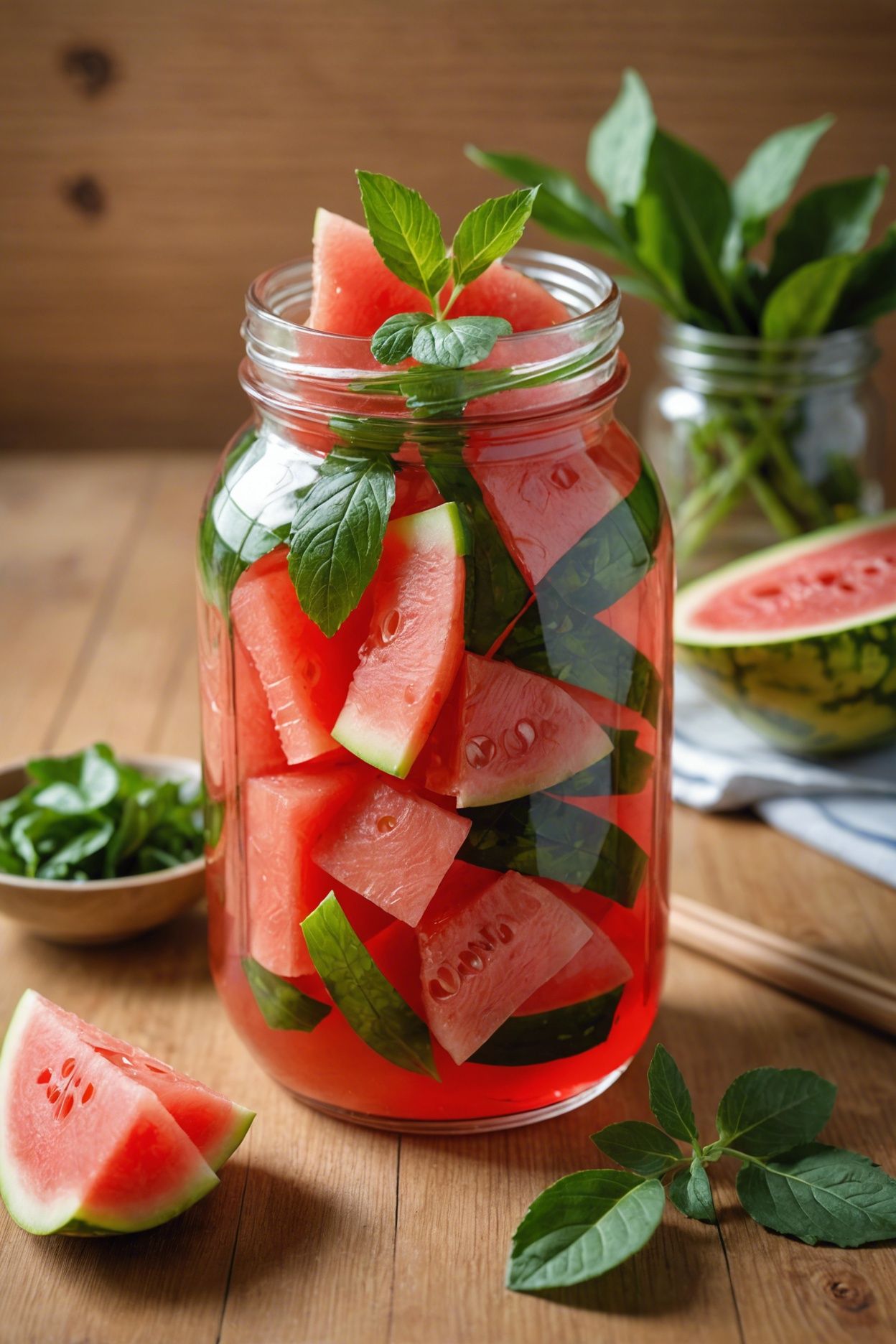The Best Fluffy Pancakes recipe you will fall in love with. Full of tips and tricks to help you make the best pancakes.
This Japanese-inspired recipe transforms humble watermelon rind into a tangy, crunchy delight.
Sweet and spicy, these pickles are a refreshing twist on traditional dill pickles, perfect for snacking or adding crunch to salads and sandwiches.
The best part?
They’re ridiculously easy to make!
Ready Time
3 hrs
Yields
5 servings
Ingredients
- 2 cups watermelon rind, sliced into thin strips
- 1/2 cup Japanese rice vinegar
- 1/4 cup granulated sugar
- 1/4 cup water
- 1 tablespoon grated ginger
- 1/4 teaspoon salt
- 1/4 teaspoon black pepper
- 1/4 teaspoon red pepper flakes
Instructions
Start by preparing the watermelon rind.
Rinse the sliced strips under cold running water to remove any excess bitterness.
Pat them dry with paper towels to remove excess moisture.
In a medium saucepan, combine the Japanese rice vinegar, granulated sugar, water, grated ginger, salt, black pepper, and red pepper flakes.
Bring the mixture to a boil over medium-high heat, stirring occasionally.
Reduce the heat to medium-low and simmer the pickling liquid for about 5 minutes, or until the sugar has dissolved and the mixture has thickened slightly.
Pack the prepared watermelon rind strips into a clean glass jar or container with a tight-fitting lid.
Pour the hot pickling liquid over the rind strips, making sure they are completely covered.
Seal the jar or container and let it cool to room temperature.
Store it in the refrigerator and let it chill for at least 24 hours before serving.
The longer it sits, the better it will pickle! Refrigerate for up to 2 weeks.
Serve chilled.
Notes
For this recipe, use the white part of the watermelon rind, avoiding the green skin.
You can also use other types of vinegar like apple cider or white wine vinegar, but Japanese rice vinegar gives the best flavor.
Adjust the level of spiciness to your taste by adding more or less red pepper flakes.
If you prefer a milder pickle, omit the red pepper flakes altogether.
To ensure the watermelon rind strips pickle evenly, pack them tightly but not overlapping in the jar or container.
You can also add a few slices of fresh ginger or a few sprigs of fresh mint to the jar for added flavor.
These pickled watermelon rinds make a great side dish or topping for salads, sandwiches, or burgers.
Experiment with different seasonings or spices to create unique flavor combinations.
Keep in mind that the pickling liquid may thicken more as it cools, so you can adjust the sugar content to your taste.
If you find the pickling liquid too sweet, reduce the sugar amount in the recipe.
Nutrional Value
- Calories: 46
- Total Fat: 0.1g
- Saturated Fat: 0g
- Cholesterol: 0mg
- Sodium: 54mg
- Total Carbohydrates: 12g
- Dietary Fiber: 0.5g
- Sugars: 9g
- Protein: 0.5g

Ask your question to our expert chef and get instant help.
Please provide details about your query with the recipe name.




